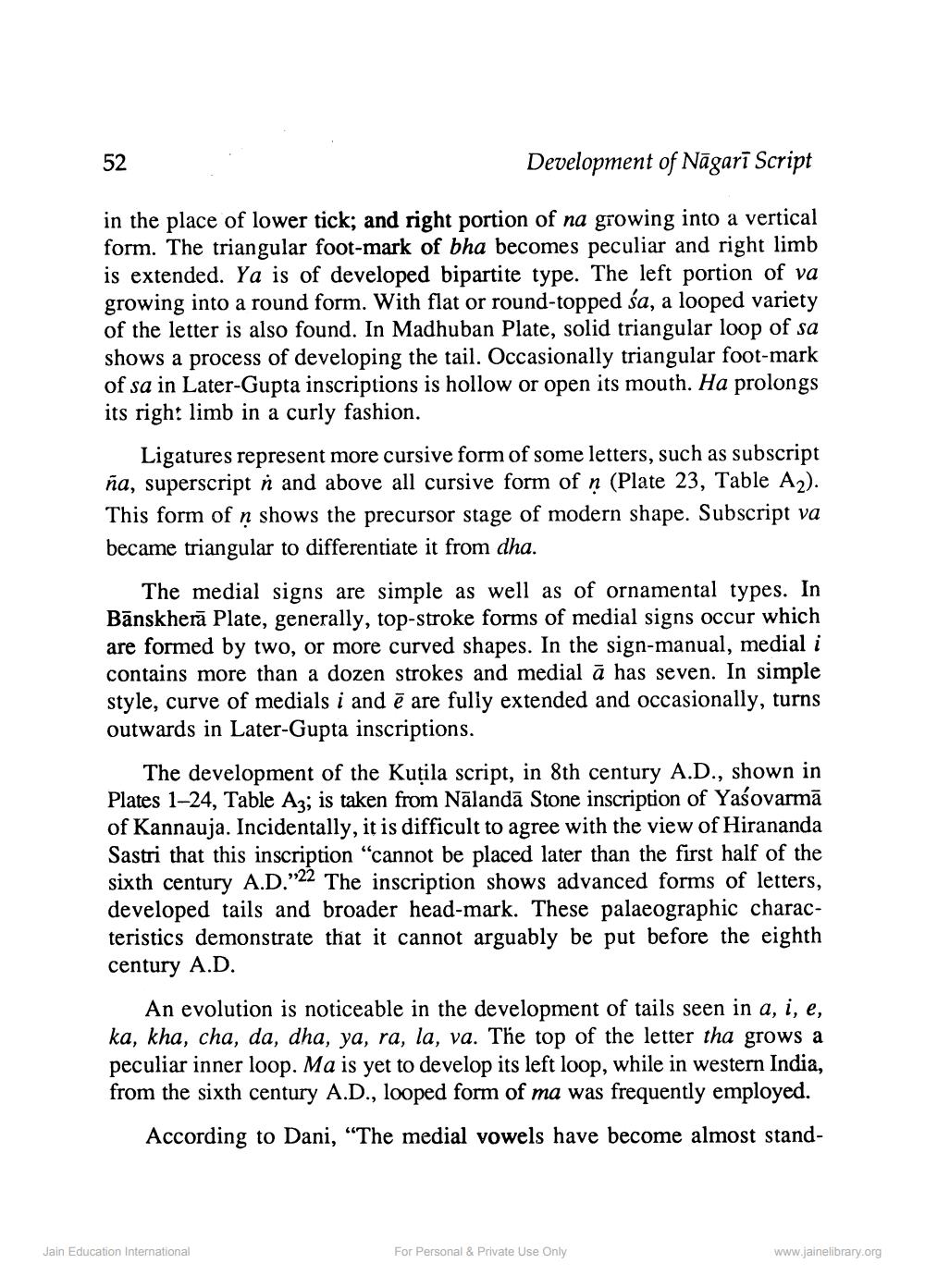________________
Development of Nāgarī Script
in the place of lower tick; and right portion of na growing into a vertical form. The triangular foot-mark of bha becomes peculiar and right limb is extended. Ya is of developed bipartite type. The left portion of va growing into a round form. With flat or round-topped śa, a looped variety of the letter is also found. In Madhuban Plate, solid triangular loop of sa shows a process of developing the tail. Occasionally triangular foot-mark of sa in Later-Gupta inscriptions is hollow or open its mouth. Ha prolongs its right limb in a curly fashion.
52
Ligatures represent more cursive form of some letters, such as subscript ña, superscript ǹ and above all cursive form of n (Plate 23, Table A2). This form of n shows the precursor stage of modern shape. Subscript va became triangular to differentiate it from dha.
The medial signs are simple as well as of ornamental types. In Bānskhera Plate, generally, top-stroke forms of medial signs occur which are formed by two, or more curved shapes. In the sign-manual, medial i contains more than a dozen strokes and medial à has seven. In simple style, curve of medials i and ē are fully extended and occasionally, turns outwards in Later-Gupta inscriptions.
The development of the Kutila script, in 8th century A.D., shown in Plates 1-24, Table A3; is taken from Nālandā Stone inscription of Yasovarmā of Kannauja. Incidentally, it is difficult to agree with the view of Hirananda Sastri that this inscription "cannot be placed later than the first half of the sixth century A.D."22 The inscription shows advanced forms of letters, developed tails and broader head-mark. These palaeographic characteristics demonstrate that it cannot arguably be put before the eighth century A.D.
An evolution is noticeable in the development of tails seen in a, i, e, ka, kha, cha, da, dha, ya, ra, la, va. The top of the letter tha grows a peculiar inner loop. Ma is yet to develop its left loop, while in western India, from the sixth century A.D., looped form of ma was frequently employed.
According to Dani, "The medial vowels have become almost stand
Jain Education International
For Personal & Private Use Only
www.jainelibrary.org




